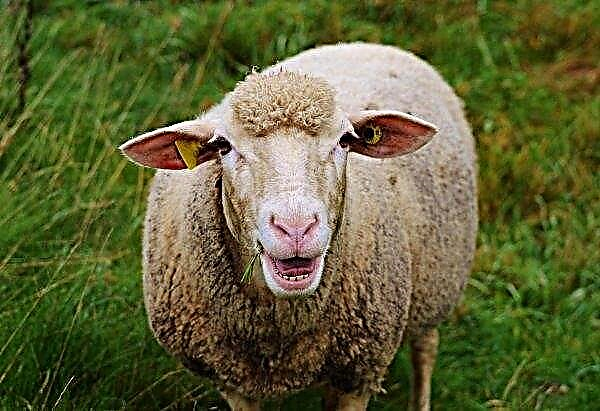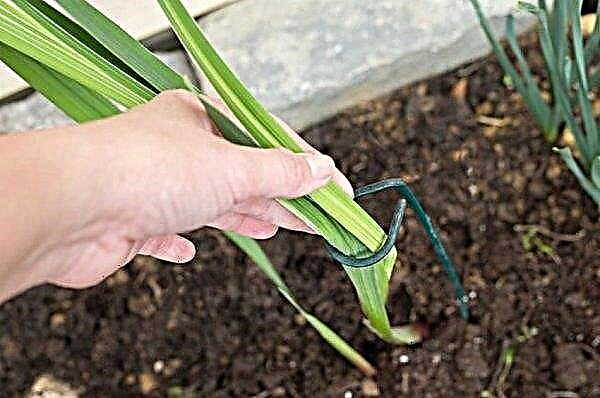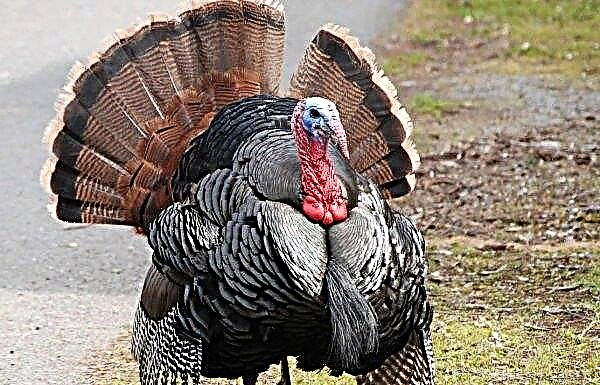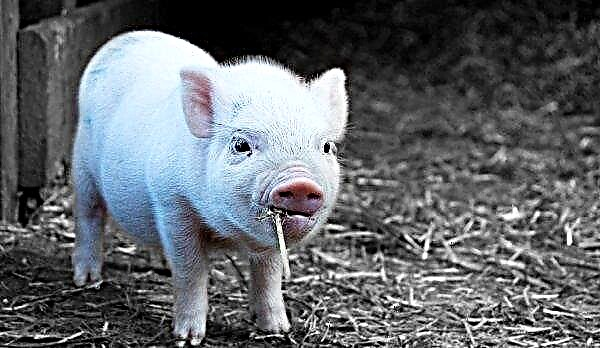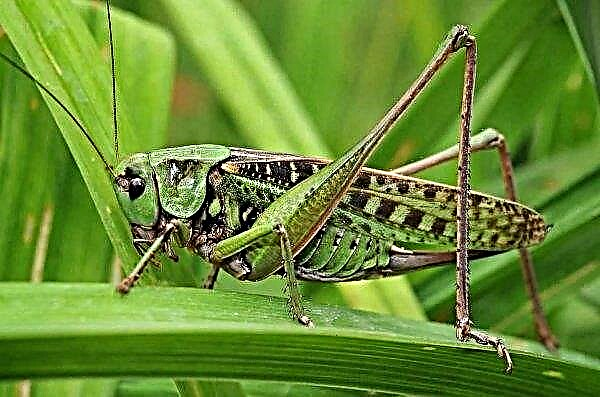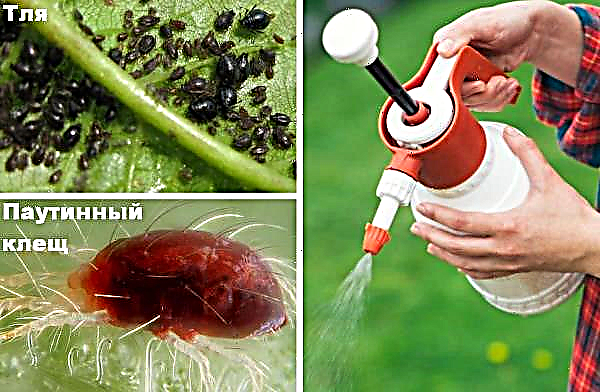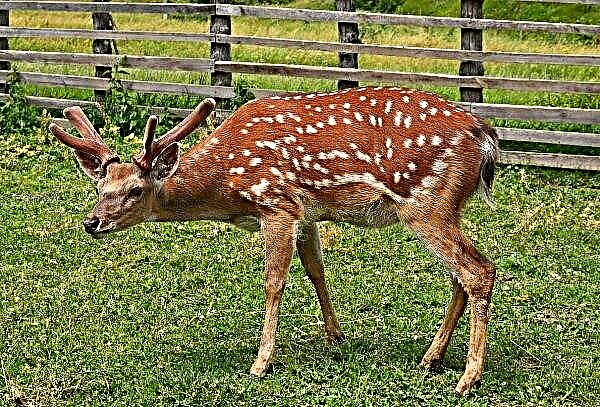New varieties of potatoes appearing on the market, through the efforts of breeders gain more and more improved varietal characteristics. Today we will talk about the variety of Sylvan, its advantages and subtleties of cultivation.
Description and characteristic
The breeding variety of the Dutch company passed a successful test in Russia and was entered in the register of crops approved for cultivation in 2011. Recommended for cultivation in the central and northwestern regions of the Russian Federation, in the Volga-Vyatka region.
Did you know? In 1778, the so-called “potato war” (Kartoffelkrieg) took place in Europe. Competing for power over Bavaria, the armies of Prussia and Austria were more eager to cut off each other's food supplies, primarily potatoes, than to participate in real battles.
Appearance of tubers and bushes
The tall bush is not dense, formed by semi-direct stems. The foliage is light, medium-sized plates with a slightly wavy edge. During flowering, forms large red-purple flowers.
The tubers are round in shape, with shallow eyes and smooth peel. The peel of the fruit is dense, one color with pulp. The taste is saturated potato, tender, without water content, with an average starch content of up to 15.3%.

Ripening period
Tubers fully ripen 70–85 days after planting. According to the generally accepted classification, such potatoes are considered medium early.
Productivity
The yield of the variety is quite high: each bush brings up to 14 potatoes to the gardener. 170–370 kg / ha are harvested on an industrial scale.
Disease resistance
High resistance was noted to attacks of nematode and potato cancer, the variety is affected by scab and late blight. According to the reviews of gardeners who have grown more than one Sylvanas crop, the plant is practically not affected by pests. In exceptional cases, it can be attacked by a Colorado potato beetle.
Advantages and disadvantages of the variety
Sylvanas variety is in demand in large and small farms.
- Among its advantages, the following are noted:
- short ripening period;
- excellent yield indicators;
- smooth surface of tubers;
- wonderful taste, without wateriness, without stickiness;
- keeps shape well during cooking;
- excellent keeping quality - up to 91% of the crop;
- resistance to drought;
- good resistance to fungi.
The lack of culture is its tendency to viral diseases, but the situation can be controlled by observing agricultural technology and preventive measures.
Planting and growing varieties
Compliance with the rules of agricultural technology, crop rotation and the preparation of beds and seed material is the key to high productivity with excellent fruit quality.
 Compliance with the rules will help increase productivity
Compliance with the rules will help increase productivity
The timing
Sylvanas prefers late spring planting. The soil should be warmed up to + 8 ... + 10 ° С, which is typical for the month of May. A more accurate date depends on the region of cultivation.
Crop rotation rules
For the variety, planting after winter crops, green manure and legumes will be an ideal option. Planting after solanaceous vegetables is not recommended, since crops are prone to the defeat of the same diseases.
Important! Potatoes can be re-planted in one area only after 4-5 years.
Soil requirements
The best development is observed on loose nutrient soils, with a deep arrangement of groundwater. The soil should be slightly acidic or neutral, nutritious.
 In autumn, the selected bed is cleaned of plant debris and dug, making compost or humus, about 5 kg / m²
In autumn, the selected bed is cleaned of plant debris and dug, making compost or humus, about 5 kg / m²
Preparing tubers for planting
30 days before planting, planting material is removed from the store and sorted out, discarding the damaged one. For a month it is placed in a dry, warm room, until the shoots appear. After that, they are treated with fungicides (boric acid, Fitosporin-M) and a growth stimulant (Epin, Zircon).
Landing technology
According to the feedback of experienced farmers, it is better to plant the Sylvan variety by the comb method. The height of the ridge is about 10 cm, the depth of planting the seed is 5–8 cm. A glass of wood ash is added to the hole along with the tuber. The distance between future bushes is at least 30 cm.
Care Features
Sylvanas is an unpretentious variety, and the procedures for caring for it are standard for potatoes.
Fertilizer
The first feeding is needed at the stage of development of the green mass of the bush. Under each bush, pour 500 ml of a solution prepared from infusion of mullein and water (1:15). During flowering, the plant is fertilized with the root method, spending under the bush 500 ml of infusion of wood ash. The solution is prepared in a proportion of 400 g per 10 liters. For the third top dressing after flowering, a mullein infusion is used: 250 g of slurry is stirred in 10 l of water, adding 30 g of superphosphate.

Watering
To grow a variety, irrigation of the soil to a shallow depth of 15–20 cm is required. Frequency in the absence of precipitation is once every 10 days. If the amount of rainfall is sufficient, the frequency of irrigation is regulated according to the state of the soil to the depth indicated above. Stop irrigation about 2 weeks before harvest so that the tubers do not become watery.
Did you know? Despite the visible and tangible strength, potato is 80% water.
Weeding and hilling
Weeds and a dense crust on the surface of the earth prevent the root system of the culture from receiving adequate nutrition and air saturation. Deep cultivation will help to make the soil breathable, and weeding at the same time will clear the soil of aggressive plants.
Hilling is carried out several times a season, as the growing stems are exposed. An earthen crest form tall, up to foliage.

Prevention of diseases and pests of the variety
Sylvanas has medium resistance to viral diseases. Among them, the following types are often found:
- ordinary mosaic - manifests itself in black dots on leaf plates;
- strip mosaic - striped strokes and spots on foliage, fragility of stems, necrotic spots;
- tuber fusiformity - deforms the fetus, leaving an abnormal number of eyes, potholes on it, stretching along the edges.

The danger of viruses is that they destroy both the crop and the seed material. It is impossible to cure such a disease, but it can be prevented. Prevention measures:
- Compliance with crop rotation.
- Thorough cleaning of the area under planting from plant debris.
- Regular disinfection of garden tools.
- Seed dressing before laying for storage and planting.
- Destruction of pests and taking preventive measures against them.
- Carefully carrying out soil care procedures so as not to damage the plant, opening the way for diseases.
Potato attacks more often than other insects Colorado beetle. Agravertin insecticide is used against the insect and its offspring - 8 ml per 1 liter of water, by spraying, one procedure is enough.
Important! One of the measures to prevent insects and fungal diseases is regular pollination of bushes with wood ash.
Harvesting and storage
After ripening, the tubers need not be overexposed in the ground. Collected either by manual or mechanized method. While the tubers are dried before laying in the store, the room itself is decontaminated with whitewash. It is important that the room is dry and ventilated. Suitable temperature for storing potatoes +1 ... + 3 ° С, humidity mode in the range of 80–85%.
Video: Sylvanas potatoes
Having appreciated the advantages of the Silvana potato variety, it is not surprising that it is popular for growing for sale in large farms and summer residents. It is not difficult to grow it, and the ability of the crop to lie for a long time, while maintaining its presentation, is complemented by the excellent taste of large and appetizing tubers.

